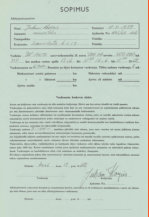












An umbrella on wheels

Citroen 2CV - 1961
The Citroën 2CV (French: "deux chevaux" i.e. "deux
chevaux-vapeur" (lit. 'two steam horses'), "two tax
horsepower") is a front-engine, front wheel drive, air-
cooled economy car introduced at the 1948 Paris Mondial
de l'Automobile and manufactured by Citroën for model
years 1948-1990.
Conceived by Citroën Vice-President Paul Boulanger to help motorize the large number of farmers still using horses and carts in 1930s France, the 2CV is noted for its minimalist
farmers still using horses and carts in 1930s France, the 2CV is noted for its minimalist combination of innovative engineering and utilitarian, straightforward metal bodywork —
combination of innovative engineering and utilitarian, straightforward metal bodywork — initially corrugated for added strength without added weight. The 2CV featured a low
initially corrugated for added strength without added weight. The 2CV featured a low purchase cost; simplicity of overall maintenance; an easily serviced air-cooled engine
purchase cost; simplicity of overall maintenance; an easily serviced air-cooled engine (originally offering 9hp); low fuel consumption; and an extremely long travel suspension
(originally offering 9hp); low fuel consumption; and an extremely long travel suspension offering a soft ride, light off-road capability, high ground clearance and height adjustability
offering a soft ride, light off-road capability, high ground clearance and height adjustability via lengthening/shortening of tie rods. Often called "an umbrella on wheels," the bodywork
via lengthening/shortening of tie rods. Often called "an umbrella on wheels," the bodywork featured a distinctive and prominent full-width, canvas, roll-back sunroof, which
featured a distinctive and prominent full-width, canvas, roll-back sunroof, which accommodated oversized loads and until 1955 reached almost to the car's rear bumper,
accommodated oversized loads and until 1955 reached almost to the car's rear bumper, covering its trunk.
Manufactured in France between 1948 and 1989 (and its final two years in Portugal 1989-
covering its trunk.
Manufactured in France between 1948 and 1989 (and its final two years in Portugal 1989- 1990), over 3.8 million 2CVs were produced, along with over 1.2 million small 2CV-based
1990), over 3.8 million 2CVs were produced, along with over 1.2 million small 2CV-based delivery vans known as Fourgonnettes. Citroën ultimately offered a number of mechanically
delivery vans known as Fourgonnettes. Citroën ultimately offered a number of mechanically identical variants including the Ami: (over 1.8 million) the Dyane (over 1.4 million); the
identical variants including the Ami: (over 1.8 million) the Dyane (over 1.4 million); the Acadiane (over 250,000); and the Mehari (over 140,000). In total, Citroën manufactured over
Acadiane (over 250,000); and the Mehari (over 140,000). In total, Citroën manufactured over 8.8 million "A Series" cars, as 2CV variants are known.
8.8 million "A Series" cars, as 2CV variants are known. A 1953 technical review in Autocar described "the extraordinary ingenuity of this design,
A 1953 technical review in Autocar described "the extraordinary ingenuity of this design, which is undoubtedly the most original since the Model T Ford". In 2011, The Globe and Mail
which is undoubtedly the most original since the Model T Ford". In 2011, The Globe and Mail called it a "car like no other." Noted automotive author L. J. K. Setright described the 2CV as
called it a "car like no other." Noted automotive author L. J. K. Setright described the 2CV as "the most intelligent application of minimalism ever to succeed as a car,"calling it a car of
"the most intelligent application of minimalism ever to succeed as a car,"calling it a car of "remorseless rationality."
"remorseless rationality."
Features of the 1948 2CV
• unusual four-wheel independent suspension, front and rear wheels which connected the front and rear suspension on each side
•
leading arm front suspension
the front and rear suspension on each side
•
leading arm front suspension •
trailing arm rear suspension
•
trailing arm rear suspension •
rear fender skirts, but the suspension design allowed wheel change without removing
•
rear fender skirts, but the suspension design allowed wheel change without removing the skirts / rear wings
•
front-wheel drive
the skirts / rear wings
•
front-wheel drive •
inboard front brakes, in order to help lower unsprung weight thus making ride even
•
inboard front brakes, in order to help lower unsprung weight thus making ride even softer
•
Four-wheel hydraulic brakes, (British Austin economy cars of the time only had
softer
•
Four-wheel hydraulic brakes, (British Austin economy cars of the time only had hydraulic front brakes, the rears were by mechanical linkage)
hydraulic front brakes, the rears were by mechanical linkage) •
small, lightweight, 9HP air-cooled flat twin engine, (with overhead valves when side
•
small, lightweight, 9HP air-cooled flat twin engine, (with overhead valves when side valves were still common), mounted very low in front of the front wheels for stability
valves were still common), mounted very low in front of the front wheels for stability •
4-speed manual transmission, (when three speeds were common) with an unusual
•
4-speed manual transmission, (when three speeds were common) with an unusual dashboard push/pull/twist linkage
dashboard push/pull/twist linkage •
bolt-on detachable front and rear wings/fenders
•
detachable doors, bonnet (and boot lid after 1960), by "slide out" P profile sheet
•
bolt-on detachable front and rear wings/fenders
•
detachable doors, bonnet (and boot lid after 1960), by "slide out" P profile sheet metal hinges
metal hinges •
front rear-hinged "suicide doors"
•
flap-up windows, as roll up windows were considered too heavy and expensive
•
detachable full length fabric sunroof and boot lid, for almost pickup-truck-like load
•
front rear-hinged "suicide doors"
•
flap-up windows, as roll up windows were considered too heavy and expensive
•
detachable full length fabric sunroof and boot lid, for almost pickup-truck-like load carrying versatility
carrying versatility •
ventilation in addition to the sunroof and front flap windows was provided by an
•
ventilation in addition to the sunroof and front flap windows was provided by an opening flap situated underneath the windscreen.
•
rack and pinion steering mounted inside the front suspension cross-tube, well behind
opening flap situated underneath the windscreen.
•
rack and pinion steering mounted inside the front suspension cross-tube, well behind the front wheels, away from a frontal impact
the front wheels, away from a frontal impact •
load adjustable headlights.
•
load adjustable headlights. •
a heater (heaters were standardised on British economy cars in the 1960s)
•
a heater (heaters were standardised on British economy cars in the 1960s)

1961
 Engine
425 cc / 7 hp
Transmission
4-speed manual
Lenght/width
3,86 m / 1,48 m
Weight
600 kg
Engine
425 cc / 7 hp
Transmission
4-speed manual
Lenght/width
3,86 m / 1,48 m
Weight
600 kg
 In 1962 the collector run an auto
rental business BK AUTO which had
five of these 2CV´s for rent. Click to
open one original rental contract.
In 1962 the collector run an auto
rental business BK AUTO which had
five of these 2CV´s for rent. Click to
open one original rental contract.




Photos mainly by Matti Kreivilä. Historical facts and technical details of the vehicles provided by Wikipedia. Movies YouTube.






